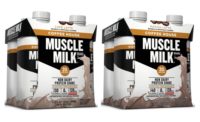2017 Ingredients for Health Guide: Form+Function: Nutritional Foods and Drinks
Consumers are increasingly using supplements for areas of their lives perceived to need additional support

SOURCE: T.J. Hine Photography
The market for dietary supplements has seen strong growth, reflecting increasing consumer concerns about the adverse effects of busy lifestyles and stress on health, as well as rising demand from an aging population. In addition to optimizing health via diet, consumers are increasingly using supplements for areas of their lives perceived to need additional support.
North America, particularly the US, has been driving activity in supplements, accounting for over 42% of global launch activity recorded by Innova Market Insights during the 52 weeks to the end of November 2015. This reflects the highly developed nature of the market, which is the largest in the world. Europe came next with just under 30%, trailing the US despite the number of countries involved.
Other factors driving the market include growing availability, the range of products and formats appearing and an increased focus on branding rather than just promoting specific ingredients and their potential benefits. The number of supplements available is very large, featuring an increasing range of ingredients, although general vitamin and mineral products continued to dominate launches in 2015, accounting for 28% of the total, ahead of botanical and herbal products with nearly 14%.
Despite problems in some countries with regard to permitted health claims, interest in positive nutrition and food and drinks—those products with intrinsic or added health benefits—appears to be continuing unabated. More than 43% of global food and drinks launches recorded by Innova Market Insights during 2015 were positioned on a health platform of some kind, up from just under 40% two years previously, in 2013.
Methods of delivery have also changed in the sector, with a move away from supplements in the form of tablets and capsules and toward alternative easier-to-consume formats, such as powders and liquids. There has also been rising interest in products that straddle the boundary between supplements and foods, with dose-delivery probiotic drinks, such as Yakult and Actimel (DanActive in the US) being one of the most high-profile examples. Others include fortified confectionery drops, chews and gummies, as well as supplement-type beverages such as Joint Juice (with glucosamine) for joint health.
Despite problems in some countries with regard to permitted health claims, interest in positive nutrition and food and drinks—those products with intrinsic or added health benefits—appears to be continuing unabated. More than 43% of global food and drinks launches recorded by Innova Market Insights during 2015 were positioned on a health platform of some kind, up from just under 40% two years previously, in 2013.
Initiatives in the dietary supplements sector have increasingly moved toward targeting specific consumer groups with benefit-oriented solutions. This involves not just lines formulated for groups such as women or older people, but also at application areas such as weight management, primarily weight loss, with nearly 10% of supplement launches taking this kind of positioning in 2015.
Another key growth area is sports supplements, which have seen rising levels of interest in line with sports nutrition as a whole. Usage is tending to spread away from professional sportsmen and athletes and more into the mainstream for a whole range of active consumers looking to improve their general health and performance levels.
2017 Ingredients for Health Guide Categories:
Intro
Diabetes & Blood Glucose Control
Originally appeared in the December, 2016 issue of Prepared Foods as Form+Function: Nutritional Foods and Drinks.
Looking for a reprint of this article?
From high-res PDFs to custom plaques, order your copy today!








